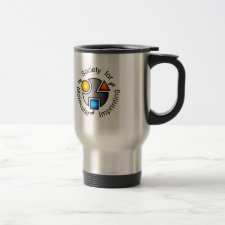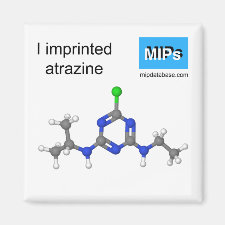
Authors: Zarejousheghani M, Fiedler P, Möder M, Borsdorf H
Article Title: Selective mixed-bed solid phase extraction of atrazine herbicide from environmental water samples using molecularly imprinted polymer.
Publication date: 2014
Journal: Talanta
Volume: 129
Page numbers: 132-138.
DOI: 10.1016/j.talanta.2014.05.034
Alternative URL: http://www.sciencedirect.com/science/article/pii/S0039914014004184
Abstract: A novel approach for the selective extraction of organic target compounds from water samples has been developed using a mixed-bed solid phase extraction (mixed-bed SPE) technique. The molecularly imprinted polymer (MIP) particles are embedded in a network of silica gel to form a stable uniform porous bed. The capabilities of this method are demonstrated using atrazine as a model compound. In comparison to conventional molecularly imprinted-solid phase extraction (MISPE), the proposed mixed-bed MISPE method in combination with gas chromatography-mass spectrometry (GC-MS) analysis enables more reproducible and efficient extraction performance. After optimization of operational parameters (polymerization conditions, bed matrix ingredients, polymer to silica gel ratio, pH of the sample solution, breakthrough volume plus washing and elution conditions), improved LODs (1.34 μg L-1 in comparison to 2.25 μg L-1 obtained using MISPE) and limits of quantification (4.5 μg L-1 for mixed-bed MISPE and 7.5 μg L-1 for MISPE) were observed for the analysis of atrazine. Furthermore, the relative standard deviations (RSDs) for atrazine at concentrations between 5 and 200 μg L-1 ranged between 1.8% and 6.3% compared to MISPE (3.5-12.1%). Additionally, the column-to-column reproducibility for the mixed-bed MISPE was significantly improved to 16.1%, compared with 53% that was observed for MISPE. Due to the reduced bed-mass sorbent and at optimized conditions, the total amount of organic solvents required for conditioning, washing and elution steps reduced from more than 25 mL for conventional MISPE to less than 2 mL for mixed-bed MISPE. Besides reduced organic solvent consumption, total sample preparation time of the mixed-bed MISPE method relative to the conventional MISPE was reduced from more than 20 min to less than 10 min. The amount of organic solvent required for complete elution diminished from 3 mL (conventional MISPE) to less than 0.4 mL with the mixed-bed technique shows its inherent potential for online operation with an analytical instrument. In order to evaluate the selectivity and matrix effects of the developed mixed-bed MISPE method, it was applied as an extraction technique for atrazine from environmental wastewater and river water samples
Template and target information: atrazine
Author keywords: molecularly imprinted polymer, Mixed-bed, solid phase extraction, atrazine, herbicides



Join the Society for Molecular Imprinting

New items RSS feed
Sign-up for e-mail updates:
Choose between receiving an occasional newsletter or more frequent e-mail alerts.
Click here to go to the sign-up page.
Is your name elemental or peptidic? Enter your name and find out by clicking either of the buttons below!
Other products you may like:
 MIPdatabase
MIPdatabase









